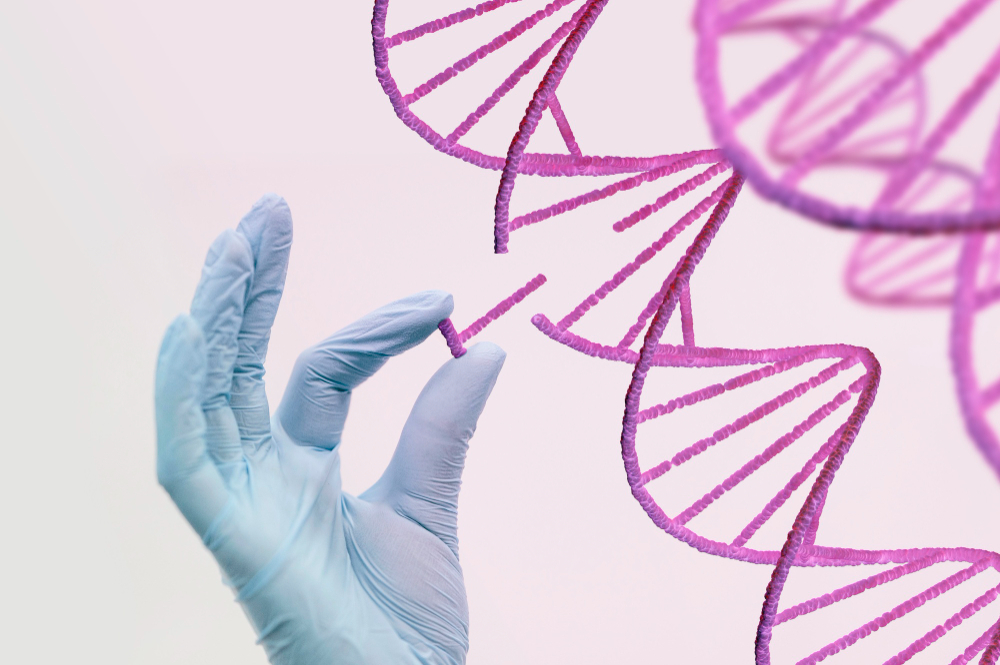DNA replication is a fundamental process in biology that ensures the faithful duplication of genetic information. It involves multiple steps and a variety of enzymes and proteins working together to ensure accuracy. Here’s a more in-depth breakdown of the process:
Initiation:
- DNA replication begins at specific sites on the DNA molecule known as origins of replication.
- A group of initiator proteins recognizes and binds to these origins, initiating the process.
Unwinding:
- Enzymes called helicases unwind and separate the two DNA strands by breaking the hydrogen bonds between complementary base pairs. This creates two single-stranded DNA templates.
Single-Strand Binding Proteins:
- These proteins bind to the separated DNA strands to prevent them from re-annealing (reforming the double helix) and to keep them accessible for replication.
Priming:
- DNA replication cannot begin without a primer, which provides a 3′ end for DNA synthesis.
- Primase, an RNA polymerase, synthesizes short RNA primers complementary to the DNA template.
Elongation – Leading Strand:
- The leading strand is the strand that can be synthesized continuously in the 5′ to 3′ direction because it follows the direction of the unwinding DNA.
- DNA polymerase III attaches to the RNA primer at the 3′ end and begins adding complementary deoxyribonucleotides (A, T, G, or C) to the growing strand.
Elongation – Lagging Strand:
- The lagging strand is synthesized discontinuously because it runs in the opposite direction of the unwinding DNA.
- Primase creates RNA primers at intervals along the lagging strand.
- DNA polymerase III adds deoxyribonucleotides to each RNA primer, forming short DNA fragments known as Okazaki fragments.
- DNA polymerase I removes the RNA primers and replaces them with DNA nucleotides.
- DNA ligase then seals the gaps between Okazaki fragments, creating a continuous complementary strand.
Proofreading and Error Correction:
- DNA polymerases have proofreading abilities to recognize and correct errors that may occur during replication, ensuring high fidelity.
Termination:
- DNA replication continues until the entire DNA molecule is copied.
- Replication terminates when DNA polymerases reach specific termination sequences.
Result:
- At the end of DNA replication, you have two identical DNA molecules, each consisting of one original (parental) strand and one newly synthesized (daughter) strand. These molecules are known as sister chromatids and are ready for various cellular processes, such as cell division.
DNA replication is highly regulated and accurate to maintain genetic integrity. It is essential for the continuity of genetic information from one generation of cells to the next, and any errors can lead to mutations with potentially significant consequences.
Image by Freepik





Leave a Reply
You must be logged in to post a comment.